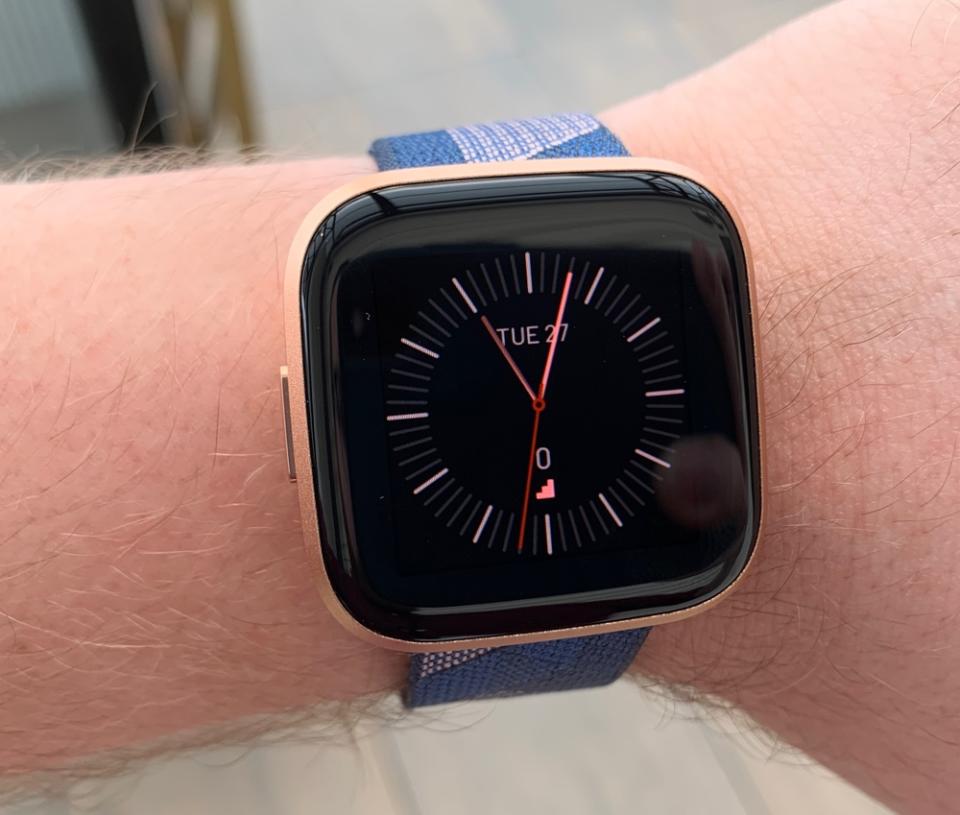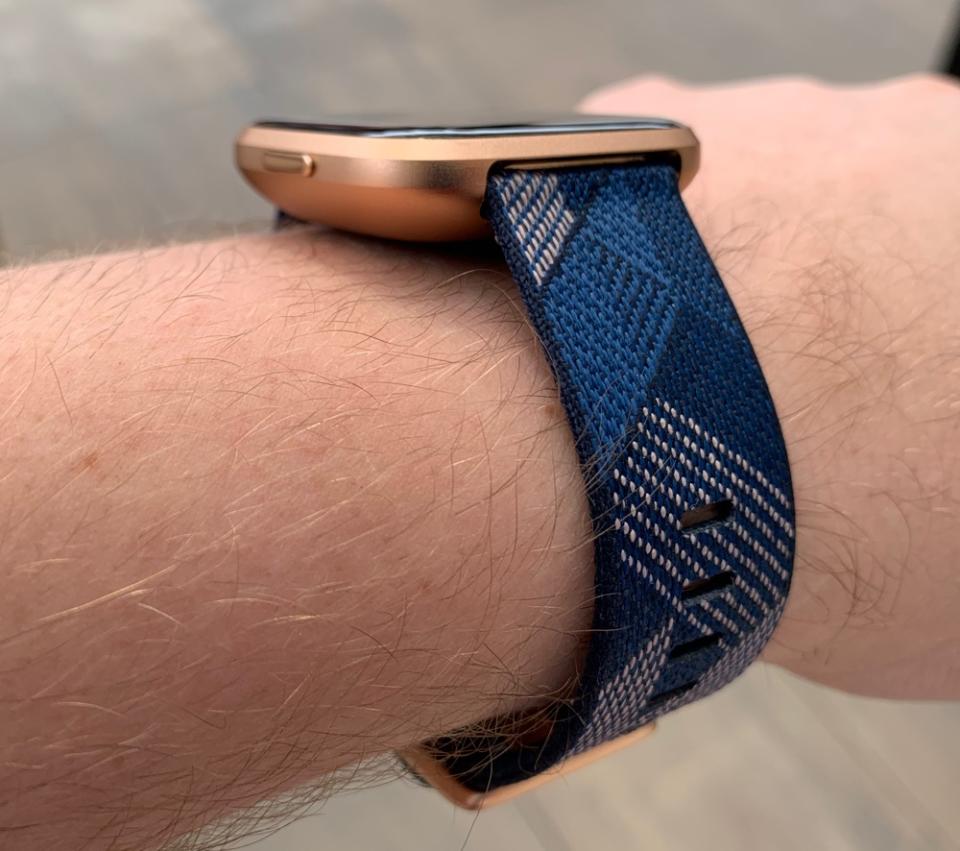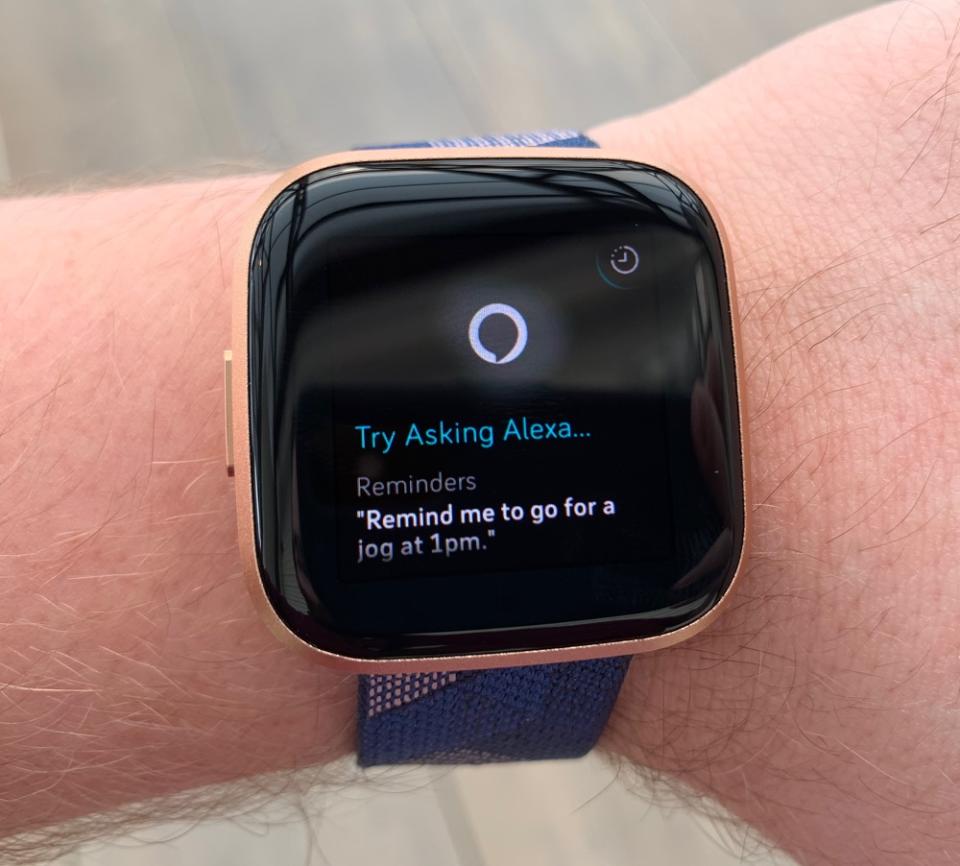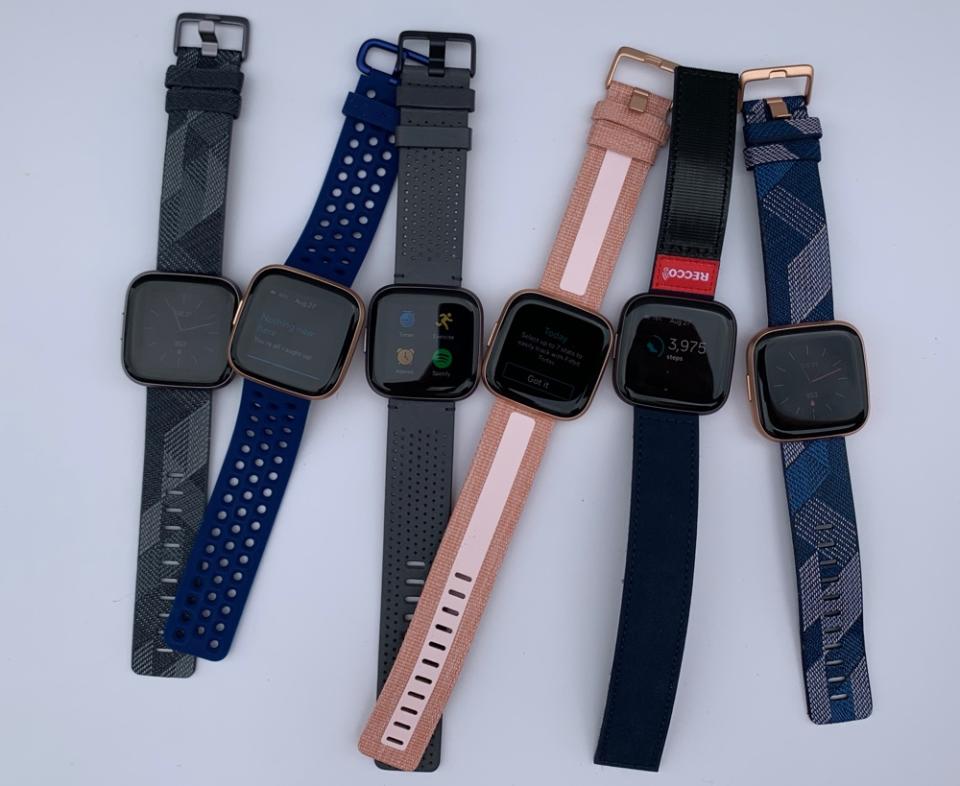Fitbit’s $199 Versa 2 offers a functional smartwatch in an inexpensive package
Fitbit (FIT) is rolling out a new subscription health and fitness tracking service later this fall called Fitbit Premium. But to take advantage of the service, you’ll need a Fitbit device — which is where the new Versa 2 comes in.
Available for $199, the Versa 2 is Fitbit’s latest take on the smartwatch genre. I’ve been wearing the Versa 2 for the better part of a week, day and night, and despite a few nitpicky flaws — I really wish it showed more information about my workouts on a single screen — it offers tons of functionality in an inexpensive package.

But we can’t talk about smartwatches without bringing up the market leader, the Apple Watch (AAPL), which starts at $279 for a Series 3 and $399 for a Series 4. And while the Versa 2 holds its own against Apple’s offering — its battery and sleep tracking are beyond the Apple Watch’s capabilities — the one you choose will largely come down to how much you’re willing to spend on a smartwatch.
The Versa 2’s design
Fitbit has been evolving the look of its smartwatches over the last few generations to make them appear less sporty, and more like something you’d wear at the office, a barbecue, or formal occasion. The company offers a slew of optional bands made from a variety of materials including leather, suede, and stainless steel, that are, mercifully, easier to swap out than the previous generation of replacement bands.
The Versa 2’s overall look is also rounder and more refined. The Fitbit Blaze, the company’s discontinued watch, and Fitbit Ionic, a sporty smartwatch, were boxy and, in retrospect, looked more like what people from the ‘90s thought smartwatches should look like.

The Versa line, and especially the Versa 2, has softer angles, and sits more comfortably on your wrist. In fact, there were more than a few times when I showed the Versa 2 to people only to have them ask “Isn’t that the Apple Watch?” Whether that’s a positive or not depends on if you like the look of the Apple Watch. And since I do, I‘m giving the Versa 2 points for style.
The biggest improvement to the Versa 2 over its predecessors is Fitbit’s decision to use an AMOLED display rather than a standard LCD panel. That not only enhances colors on the watch, since AMOLED screens can produce more vibrant hues, but it also helps with battery life. That’s because AMOLED displays consume less power than LCD panels.
That AMOLED screen also gives you the option of setting the Versa 2’s display to always-on mode, which continuously shows a black and white time readout, as well as your activity and step goals.
It’s nice to be able to see the time quickly without having to raise your wrist, but it also turns off the watch’s raise-to-view functionality. That means if you want to check out certain apps on the Versa 2, you’ll have to either double-tap the display or press the watch’s side button. It’s a minor annoyance, but struck me as odd for an otherwise well-designed feature.
Fitbit has also teamed up with Amazon (AMZN) to bring the e-commerce giant’s Alexa voice assistant to the Versa 2. To call up Alexa, you press and hold the Versa 2’s side button and then ask your question. The assistant is helpful when it comes to queries about how many calories are in a certain food, or other basic questions.

You can’t, however, ask for anything that would require Alexa to display your answer. I also noticed that the Alexa takes too long to reply to simple requests such as asking it to set a 1-minute timer during workouts. The Apple Watch’s Siri is generally much faster.
Working out and apps
I’ve been working out for the past few months to get in shape for the summer. But I like cheese too much, so getting in shape for the summer is now more about getting in shape for the winter. That said, I’m still running and lifting weights more, so I was excited to strap on the Versa 2 and see how it might motivate me during my workouts.
The Versa 2 offers a number of workouts including outdoor running, running on the treadmill, weightlifting, swimming, biking, or a general workout that lets you track your calories during whatever exercise you partake in, whether that’s jumping rope, crossfit, bear wrestling, competitive kite flying — it’s really up to you.
I run on a treadmill, because when I get halfway through an outdoor run, I’m overcome with a sense of dread knowing that, to get home, I still have to run there. On the treadmill, I can step off and plop down on my couch. Treadmill tracking on the Versa 2, like other smartwatches, requires that you run or walk outdoors first so it can measure your stride to ensure that it’s calculating the right distance you run indoors.

This took just a few days, during which I chose to track my walks to and from the gym. Because, again, I’m not going to start running outside anytime soon. During those walks the Fitbit’s automatic workout tracking accurately tracked my steps and distance.
My one issue with the Versa’s workout tracking feature is that when you start, say, a run, it doesn’t provide you with all of your information — heart rate, distance, pace, or the actual time — on a single screen. To look at that you have to swipe across the display or tap the Versa 2’s physical button.
I’m not what most people would call “coordinated,” so having to tap a button or swipe across the screen with sweaty fingers is a pain that somehow makes me even more winded than running alone. Putting everything on one screen would make life a little easier.
The Fitbit app
Fitbit’s smartphone app offers a litany of stats and measurements that help you better understand your fitness level. The main Today page shows you how many steps you’ve taken, floors you’ve climbed, miles you’ve walked, calories burned, and active minutes. You’ll also see your weekly exercise goal, your sleep information, and more.
A slew of apps on the market are capable of tracking your health and fitness goals, but where Fitbit helps separate itself from the pack is its sleep tracking. Thanks to the Versa 2’s long-lasting battery — five days with the always-on display off — you can wear the watch while you sleep.
During that time the Versa 2 will measure your movement and heart rate to determine which stage of sleep you’re in, and give you a sleep score in the morning based on how long you were asleep and how restful it was. I have a sleep disorder known as “waking up to eat half a jar of peanut butter while standing over the kitchen sink.”
The Versa 2 was always able to determine when I woke up and for how long, leaving me with between four and six hours of sleep each night. Whenever I saw that I slept just four or so hours, I ended up feeling more tired than I normally would. That might have something to do with the fact that I never really pay attention to how little I actually sleep. As a result, I started making myself go to bed earlier than normal.
The app also offers the ability to try new workout challenges, as well as jump into the Fitbit Couch app to test workouts you’re interested in.
Fitbit’s goal, however, is to ultimately move as many people as possible over to its upcoming Fitbit Premium offering, which will provide more personalized coaching and health tracking capabilities. The service, which will launch later this fall and cost $9.99 per month or $79.99 per year, is seen by analysts and investors as the best way for Fitbit to return to meaningful growth.
You’ll need to stay tuned for our review of that, though.
Should you get it?
The Fitbit Versa 2 is an impressive, handsome smartwatch with solid capabilities and a fantastic app that truly helps you understand your current health and fitness levels, and provides the means to improve them.
With a more distinguished design, and vibrant display, not to mention a compelling price, the Versa 2 is a great option for anyone who wants a smartwatch that won’t break the bank.
More from Dan:
The Sonos Move is the company’s first portable speaker, costs $399
Google’s new Android Focus Mode could break your app addictions
Email Daniel Howley at dhowley@yahoofinance.com; follow him on Twitter at @DanielHowley.
Follow Yahoo Finance on Twitter, Facebook, Instagram, Flipboard, SmartNews, LinkedIn,YouTube, and reddit.



